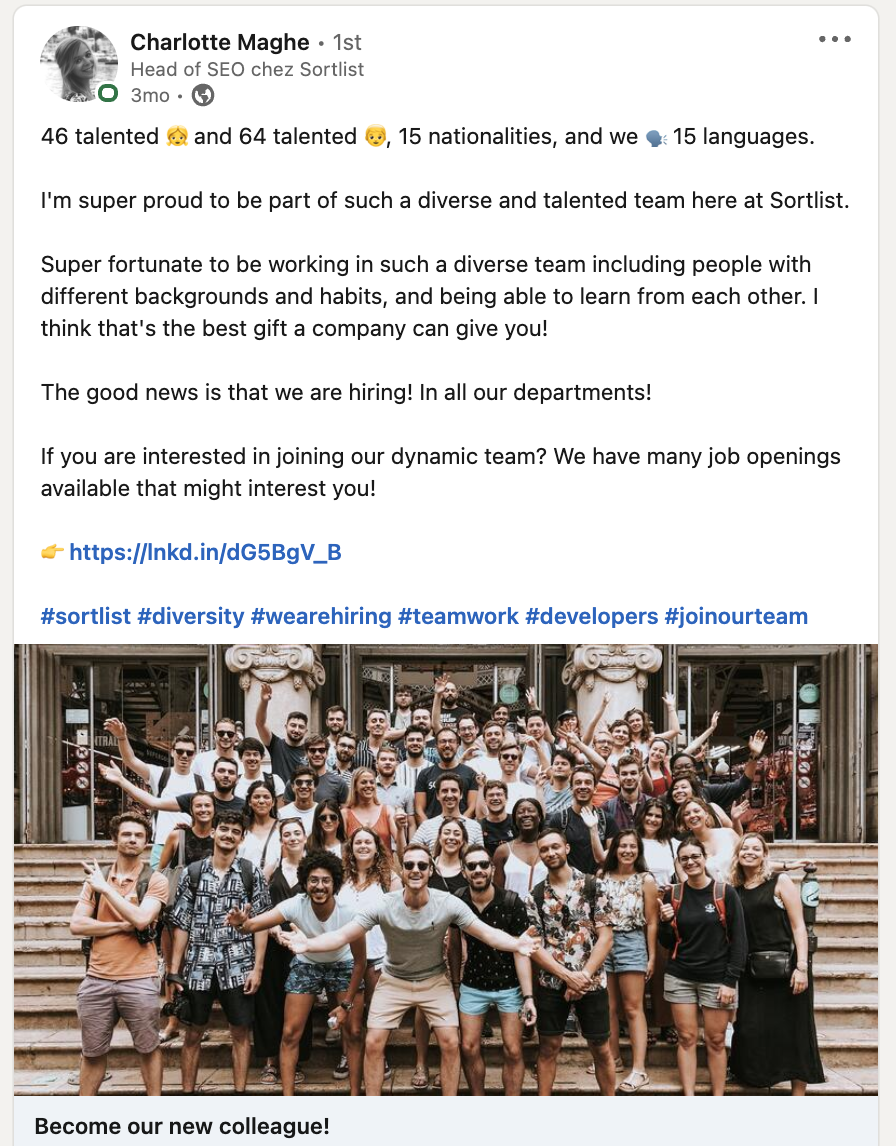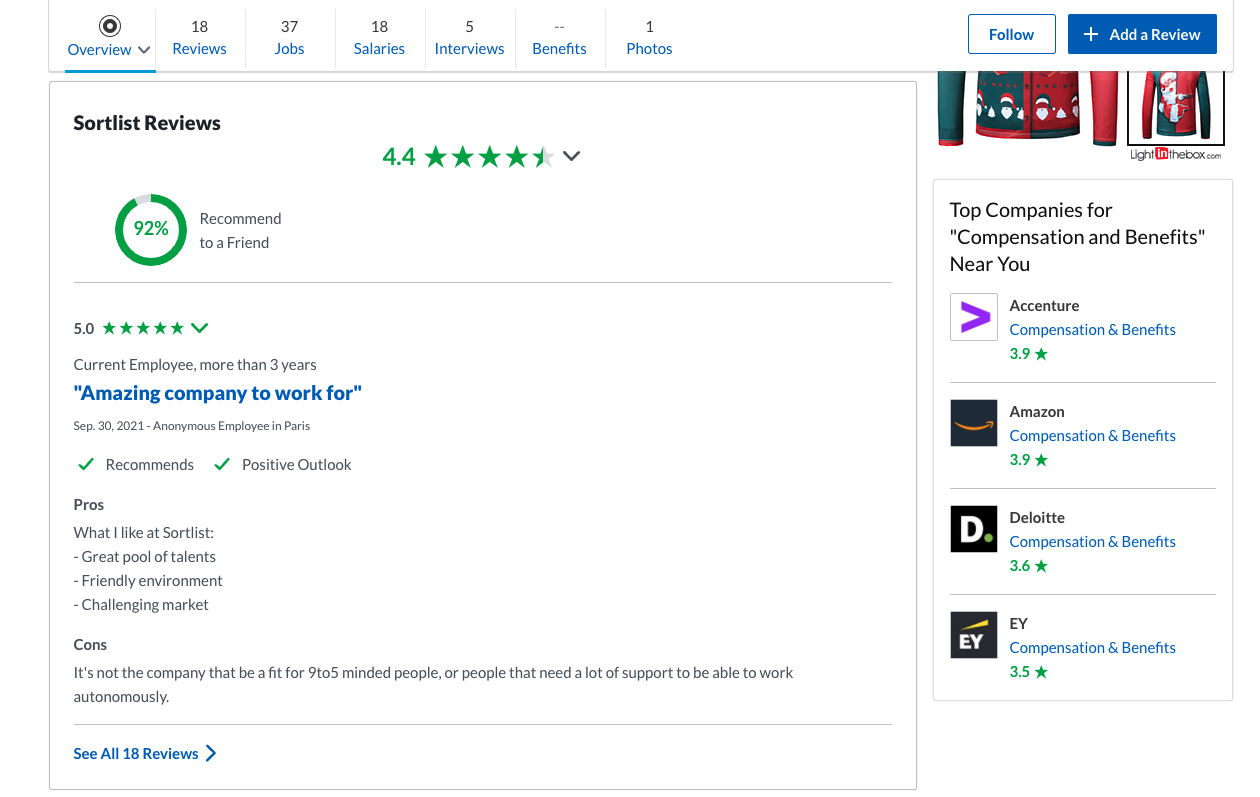
What Is Employee Branding & How Can It Help Strengthen Your Company Culture and Employer Brand?
Last update: 11 August 2023 at 11:39 am
Regardless of size or shape, every business has two sides: the side of the employer or the employer brand and the side of the employee or the employee brand.
The latter side is internal, its main focus being on people and their perception of the company they work for. In simple terms, employee branding is more like a process. It that aligns a company’s employees with its culture.
A strong employee brand lifts your company up from the inside, its ultimate goal being to make it desirable on the outside through the eyes of your people.
In the following lines, we will dig deeper into some of the core benefits of employee branding and the main benefits it brings to building a positive employer brand.
Your People, Your Brand Ambassadors
One of the core benefits of employee branding is that it can help convert people into brand ambassadors. At an organizational level, this approach strengthens company culture and at the same time it increases brand awareness.
To get it done right, it all begins with seeing employees for what they are: human beings with feelings, needs, and expectations. The key ingredients to converting your people into your brand ambassadors.
Companies with a solid employee brand can convert their people into their brand ambassadors, also known as a company’s best internal advocates. However, it pays to know that attracting the super talented is not an easy strategy.
First and foremost, employees must be aligned 100% with your company culture; that is the unique set of shared goals, values, and best practices that define an organization.
In general, engagement from employees on social media is rather low, with very few “Following” or “Linking” the social page of the company’s they work for.
At a global level, only 20% of the workforce is engaged at work, and following the year 2020, employee quit rates have skyrocketed. On the bright side, 76% of companies worldwide are using social media as a main channel for employee branding.
Now more than ever, the online realm should be taken seriously by brands worldwide. It’s not just an opportunity to increase brand awareness, but a vital ingredient to converting your people into your brand ambassadors.

Guidelines to Empowering Employees to Become Brand Ambassadors
To empower employees and turn them into brand ambassadors, first you need to have a well-defined EVP: employee value proposition. What sets you apart from your main competitors? What are your unique company values? Your culture? The answers to the questions above are the key to attracting and retaining top talent; people that live and breathe your company’s employer brand.
As far as employee branding is concerned, the following steps will help empower your people and convert them into advocates:
1. Share Your Company Vision With Employees
Get major stakeholders involved in the process. For employees to gain an interest in what you have to say and offer, the best approach is to bring in the leaders.
This will give them a sense of ownership and freedom to speak up. Comfortable employees are not afraid to share thoughts and ideas, make a contribution, and ultimately make decisions. Inspiring leaders can give them that sense of autonomy, which in turn will drive them to identify themselves with your company culture.

2. Become Open to the Ideas of Your Employees.
Believe it or not, it is important to welcome the ideas of your employees. The more you show them that you care for what they have to share, the better the chances you have to retain them for an extended period of time.
Use a survey to get their needs met, invite them to ask open questions, and be ready to implement their feedback.

3. Your Company Brand, Activated From the Inside Out.
Internal activities, engagement campaigns, workshops, team buildings should also be shared on the outside.
However, to instill a sense of empowerment in your people, it pays to be and act genuine. Happy employees are not just productive; they become eager and motivated to spread the word and take action both in real life and on social media.
Think beyond branded company items for Christmas and stay focused on what they truly want at work; what makes them perform.
4. Develop an Employee Brand Ambassador Program
What keeps your people motivated? What part(s) of your company culture excites them the most? If it’s teamwork, for example, you can include board game marathons as part of your employer branding strategy.
It will enable them to connect more and get to know their peers better. Encourage employees to share their experiences, but don’t make it a requirement.
5. Lead by Example
Always remember that “leaders eat last”. That is, your goal as a manager, CEO, CTO, etc. is to act in a way that is inspiring to your employees.
Teach them with kindness, don’t judge, and be present for them. The success of any company or organization lies in the hands of the people. If you want yours to become advocates, you need to lead by example and they will follow.
The Importance of Employee Feedback for Employee Branding
Giving and receiving feedback is yet another fundamental aspect of your company’s employee branding process. Regardless of size or shape, we live in a digital world where people have gotten used to expressing their opinions online.
The problem is, they do it more often when they’re frustrated or angry. Review websites such as indeed.com and Glassdoor are no longer used to just find jobs. They’ve grown into global platforms where employees can provide feedback on their employers.

The same thing goes for social media channels. However, there are ways to hide bad reviews or comments you don’t want others to see. To prevent that from happening, it’s best to embrace what your company is doing right and wrong. Use feedback to your advantage and don’t let it sink your company culture. The best approach in this direction is to become more open to change.
Choose to get comfortable with the uncomfortable to succeed at employee branding and win over new candidates. Feedback – good and bad – is a valuable resource. It paves the way to instilling honesty and transparency, building integrity in your current employees over time.
Quarterly employee surveys are highly recommended if you want to get the pulse of engagement. Use an eNPS (employee net promoter score) to get an overview of your employers’ engagement levels within your company. By measuring employee satisfaction against overall employee experience, you can find out the likelihood (on a scale of 0-10) of your employees recommending your company to others.
Guidelines to Increasing Employee Experience
Whether you’re using surveys, the eNPS metric, or any other tools to assess employees experience, here are some key takeaways to increase engagement and develop a positive overall employee brand initiative:
- Create a safe workplace for employees. “Safe” is the keyword because people today want to work in companies that care about their needs and wants. And since we’re living changing times, safety goes beyond financial incentives.
- Encourage open communication. “Open” is the keyword because people work best when they’re not afraid to speak their minds. Communicating freely enables them to open up about concerns they mind have, doubts, and worries.
- Offer honest support. “Honest” is the keyword because you want people to be truthful and talk about what bothers them. This approach increases employee branding, at the same time strengthening your employer branding strategy. Mentorship programs, coaching, and employee training and development are excellent ways to show your people that you care about their wellbeing.
Conclusion
Now that you have some idea of what employee branding is and how it can help strengthen your employer brand, the next step is to act in this direction. Build your company’s culture from the ground up, starting internally (with people) and then making the transition externally (offline/online media).
The reason why internal branding comes first is because any company looking to become a “great company to work for” needs a foundation; a strong foundation ready to hit the ground running as soon as it reaches the offline/online world.
Yes, your people can become brand ambassadors if you can make them feel “at home” when they’re “at work”. And yes, your people will increase your employee branding if you’re willing to accept and implement their feedback.
The more you listen and act the better the chances you have to build a company that’s not just a great place to work “for”, but also a company with a strong employer branding identity that is a great place to work “in”.






